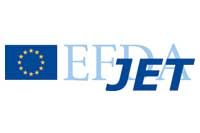Solving a sticky problem for cancer treatment and getting into the fusion energy game Understand article
Science in School is published by EIROforum, a collaboration between eight of Europe’s largest inter-governmental scientific research organisations (EIROs). This article reviews some of the latest news from EIROs.

EIROforum
EIROforum combines the resources, facilities and expertise of its member organisations to support European science in reaching its full potential.
EFDA-JET: The physics behind fusion energy in a game

EFDA has developed an App that conveys some core mechanisms behind operating a fusion reactor. In ‘Operation Tokamak’, gamers create fusion conditions by bringing a plasma up to temperature, confining it with magnetic fields and keeping it stable. If successful, players learn how much energy they produced and how much CO2 they saved compared to fossil power. Player’s tools are magnets, heating systems and microwave guns, which they use to shoot magnetic islands – instabilities, which weaken the plasma confinement. The game also intends to raise student’s interest in taking up STEM careers by giving players a taste of the excitement scientists and engineers feel when conducting experiments.
‘Operation Tokamak’ offers teachers a modern tool to explain the basic physics behind fusion power – heat and confinement – as well as touching the subject of plasma stability. The fact that fusion plasmas develop instabilities is one main reason why fusion power has not yet been realized. JET dedicates a large part of its research to mitigate these phenomena.
The App is available for Apple and Android devices and you can learn more at www.efda.org/fusion-expo/operation-tokamak/.
Situated in Culham, UK, JET is Europe’s fusion device. Scientific exploitation of JET is undertaken through the European Fusion Development Agreement (EFDA).
EMBL: Taken out of context

Cancers are often caused by mutations in DNA that can make one specific gene become hyperactive, causing the cell to behave abnormally. However, few such mutations had been found in medulloblastomas – a rare but deadly form of brain tumour that affects children – so scientists didn’t really know what caused the disease and how to cure it.
The team of Jan Korbel from EMBL, in collaboration with Stephan Pfister from the German Cancer Research Centre (DKFZ), looked at the genome sequences of the type of medulloblastoma with the worst prognosis: Group 3 medulloblastoma. They found that different patients had different large-scale changes to their DNA (inversions, deletions, duplications or even complex re-arrangements involving many DNA-shuffling events), that all resulted in either a gene called GFI1B or one called GFI1 becoming abnormally active. But the gene itself had no mutations. All that had changed was its context and location within the chromosome: the large-scale DNA changes placed GFI1B (or GFI1) close to sequences called enhancers, which can dramatically activate genes. This turned the gene on in cells where it would normally be switched off, and that, the researchers think, is what drove the tumour to form.
This is the first time such a mechanism has been described in solid cancers. “This could be relevant for research on other cancers, as we found that those genes had been activated in a way that cancer researchers don’t usually look for,” says Korbel.
To read more about Jan Korbel and his research, visit his personal webpage.
To learn more about Stephan Pfister, check this article published previously in Science in School:
Schulter D. (2014) Doctor in the morning, researcher in the afternoon. Science in School 28: 50-53.
For more information on this finding, read the press release.
Paper: Northcott, P.A., Lee, C., Zichner, T. et al. Nature (in press)
EMBL is Europe’s leading laboratory for basic research in molecular biology, with its headquarters in Heidelberg, Germany.
European XFEL: Anticipation builds

Activity has been increasing at European XFEL, the 3.4 km long X-ray free-electron laser facility under construction in the Hamburg area of Germany. Following completion of the underground construction last year, above-ground construction is moving into a new stage, and scientists have been progressing on the development and refinement of instrumentation and methods.
One such method that many future users of the European XFEL are anticipating is the possibility of creating “molecular movies”, or datasets showing atomic motion within molecules with unprecedented clarity. The European XFEL’s fast repetition rate – 27 000 flashes per second – and intense brightness will allow scientists to collect information at a femtosecond (quadrillionth of a second) timeframe. The scientists could take that data and, like the frames in an animation, show how atoms move within a molecule and how exactly complex chemical reactions occur. A recent experiment, which involved scientists from European XFEL, showed that procedures similar to the theorised “molecular movie” ones can reveal transitional states – the “in-between” forms of molecules found during the progression of chemical reactions
In another experiment, scientists successfully tested a way of identifying and measuring spiraling, or circularly polarized, X-ray light. Such light could open unexplored areas of chemistry and help reveal new information about the asymmetries, or handedness, of certain molecules crucial to life. Yet another publication revealed details about the chemistry of hydrogen inside gas giant planets such as Jupiter. Beyond pushing forward the development of several instruments, these studies are examples of the depth and breadth of research possible at light sources such as European XFEL, crossing boundaries of chemistry, biology, physics, and many other fields.
Meanwhile, scientists and engineers have been busy working on special sample delivery systems and detector arrays for the instruments, data handling and control software for the entire facility, devices for monitoring the characteristics of the X-ray flashes, and superflat mirrors specially designed to direct the X-ray flashes so they can keep those characteristics after reflection.
On the construction side of things, work has begun on the headquarters building in Schenefeld. The building sits on top of the 4500 m² underground experiment hall, and is part of the same structure. In three years’ time, the headquarters and experiment hall will be rich with cutting-edge research projects by users from around the world.
European XFEL is a research facility currently under construction in the Hamburg area in Germany. It will generate extremely intense X-ray flashes for use by researchers from all over the world.
ILL: Stopping a sticky problem for cancer treatment

Results from experiments performed at the Institut Laue-Langevin (ILL) and the National Center of Neutron Research (NCNR) in the United States could help drug companies treat cancer and autoimmune disorders (e.g. arthritis and multiple sclerosis).
Monalclonal antibodies (mAbs) are proteins that hold great promise for disease treatment, but at the moment they can stick together and cluster, making them difficult to inject through thin needles – the preferred delivery technique.
Scientists at ILL and NCNR used small-angle neutron scattering (SANS) and neutron spin-echo (NSE) techniques to understand how mAbs cluster and move in high concentration solutions.
The insights provided by the research are an important step towards the development and manufacture of high-concentration biopharmaceuticals, making them easier to manufacture and fluid enough to be self-administered in the home.
ILL is an international research centre at the leading edge of neutron science and technology, based in Grenoble, France.






